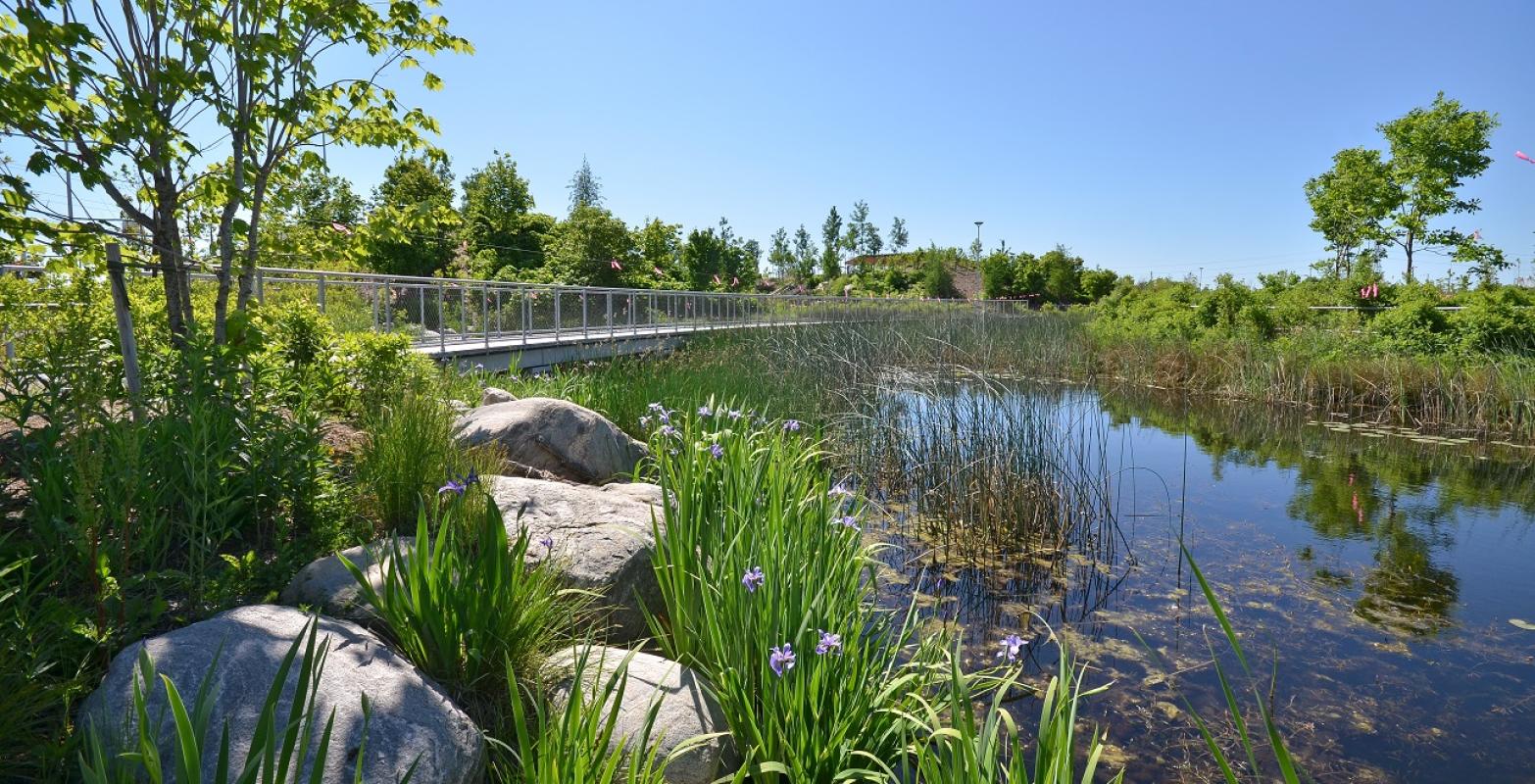Rewilding the City
POSTED: AUGUST 31, 2022 | SUSTAINABILITY, DESIGN, PARKS AND PUBLIC SPACES
BY: COREY BIALEK
“Wild” is typically the last word we’d use to describe urban centres. Streets in grid patterns, inanimate concrete buildings, and traffic lights on timers have created highly domesticated and controlled environments. But some architects and urbanists are suggesting that the removal of natural ecosystems from our living space – the disconnection between human and nature – was a wild decision, made without reasoning. Rewilding looks to connect these loose ends by purposely rebuilding and enhancing the health of ecosystems in the spaces we inhabit.
Rewilding aims to reinstate the natural flows and cycles that existed before human intervention. It looks to restore an area of land to its natural uncultivated state – especially the reintroduction of species of wild flora and fauna that have been driven out or exterminated.
Rewilding also aligns with the City of Toronto’s Biodiversity Strategy, which recognizes the intrinsic value of biodiversity and the important ecosystem services that biodiversity provides which are essential for a sustainable and resilient city.
The environmental benefits of rewilding are numerous and interconnected.
Rewilding asks us to reconsider our relationship with nature. To acknowledge that we are part of nature, not outside of it. It means bringing humans back in balance with our natural environments. When this happens, biodiversity loss can be reversed, leading to healthier, more resilient ecosystems.
Restored ecosystems can help wildlife adapt to the impacts of climate change, especially when native, drought tolerant, and pollinator-friendly plant species are introduced.
Biodiverse landscapes also draw down carbon from the atmosphere, a process referred to as sequestration. In fact, if designed with intent, landscapes can become climate positive, whereby they sequester more carbon than they emit.
When considered alongside vegetation’s ability to reduce the urban heat island effect and improve air quality, rewilded urban environments can provide significant protection against the impacts of climate change. In addition to improving the health of ecosystems, this has the added benefit of improving the physical and mental health and wellbeing of residents, workers, and visitors.
Bringing the wild back, it turns out, is not such a wild idea.
Rewilding is part of all of the public spaces Waterfront Toronto is designing and building.
Waterfront Toronto’s Resilience and Innovation Framework lays out several guiding values for projects. One of them is biophilic design, which incorporates natural forms and systems into the design and operation of buildings and infrastructure. We also value projects that demonstrate leadership and innovation. Rewilding is a key strategy to achieve both these values.
Rewilding can be implemented at various scales, from entire watersheds and provincial parks to individual backyards and boulevards.
One of our largest projects, Port Lands Flood Protection (PLFP), is poised to deliver 30 hectares of new biodiverse ecosystems, restoring the mouth of the Don River into a functioning aquatic system within a managed urban setting.
PLFP has a long list of ecological goals:
-
Enhancing ecological function and resilience to flooding
-
Creating and improving wetland habitat quantity, diversity, and complexity
-
Mimicking the form and characteristics of wetlands that would have been created naturally without human interference (remember, biophilic!)
-
Creating nesting areas and upland overwintering habitats for reptiles and amphibians
-
Providing suitable areas for refuge, perching, and foraging for mammal and bird species
These goals are being brought to life right now along the edges of the future Villiers Island, where you can see the new wilderness under construction. Emulating a natural shoreline, the edges of what will eventually be an urban centre – the Villiers Island community – will be ringed by a series of wild ecosystems. Forest species will find refuge in both the upland and floodplain forests. The diverse flora and fauna of marsh and swamp ecosystems will find homes in and along a riverbank that transitions from thicket swamp into marsh. And closer to the water, the marshes will give way to open water, where aquatic life teems. In concert, these complementary and holistic ecosystems will create resilient spaces that support life while strengthening the natural environment’s ability to manage storm surges.
Within the island, this rewilding extends to streets.
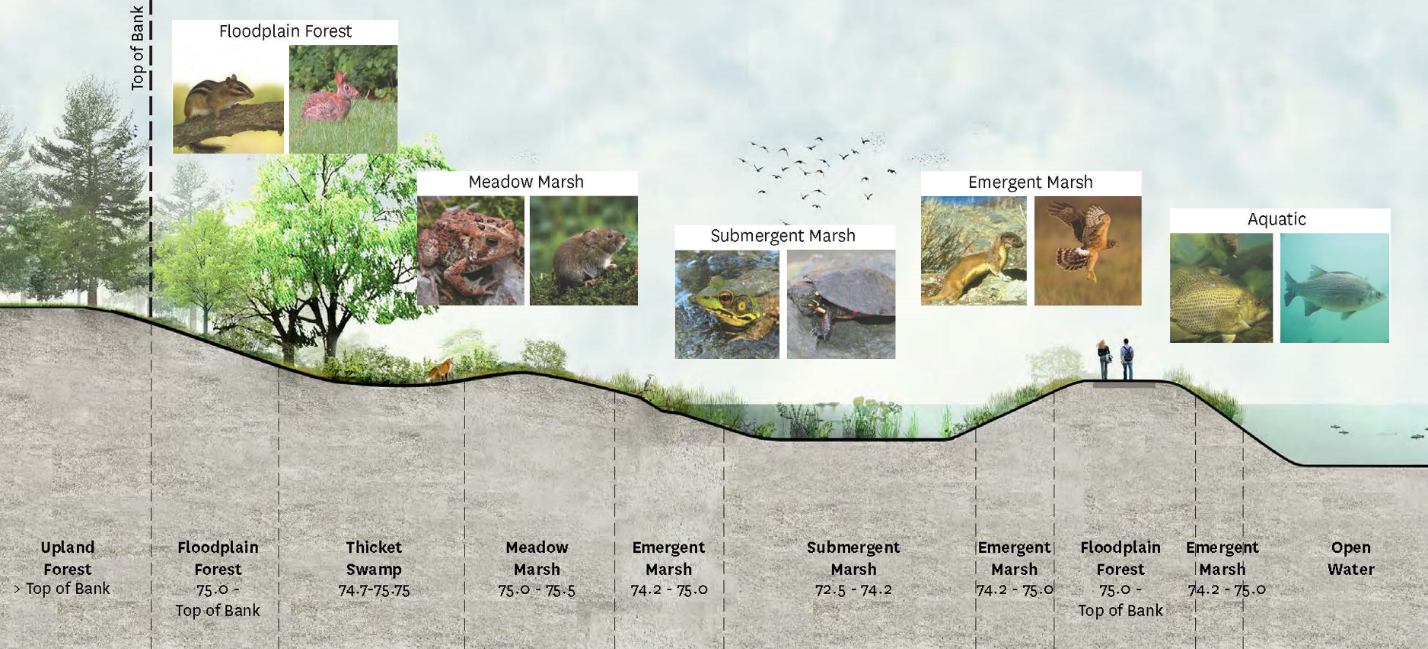
The design of Villiers Island's edges will emulate natural forest, marsh, and aquatic conditions, creating new habitat for diverse and local flora and fauna.
Bringing bees back to the street - the Lake Shore East Boulevard Sidewalk Pilot Project
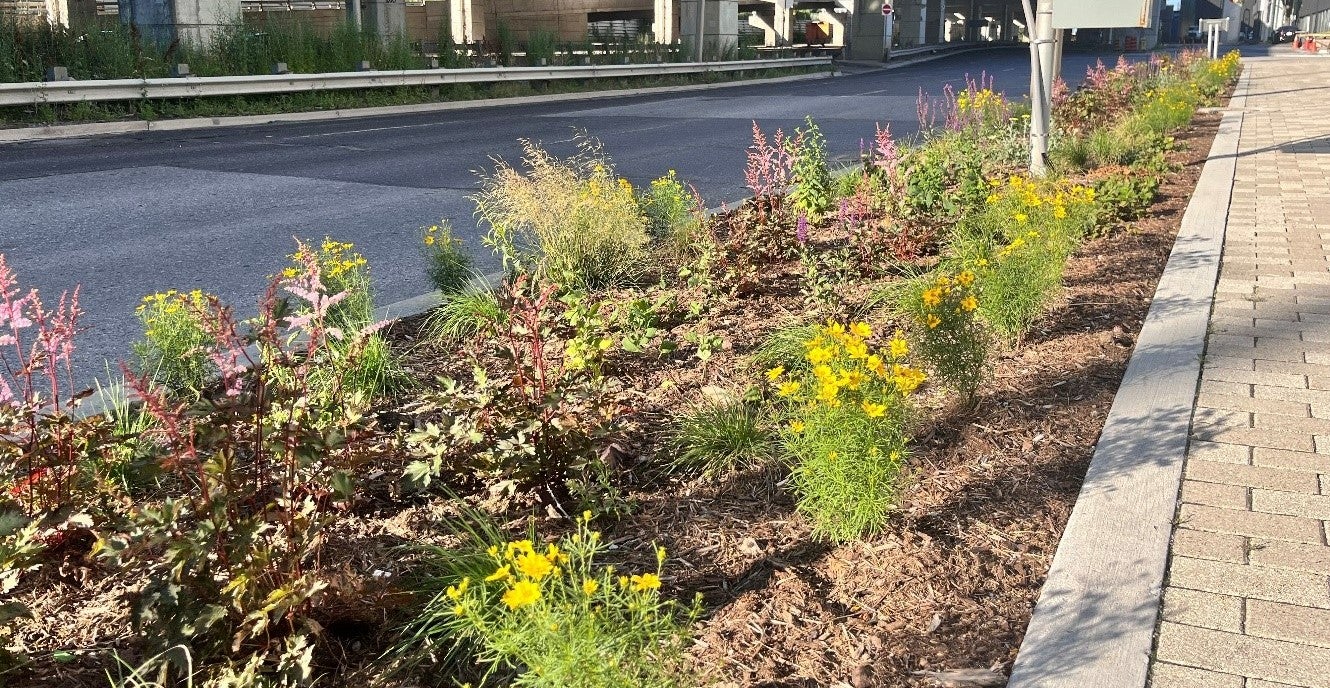
Pilots like the Lake Shore Boulevard East Sidewalk Project allow us to test a suite of features and materials that will help us to build greener streets.
The Lake Shore Boulevard East Sidewalk Pilot Project may not be an entirely new island, but it’s going to make a big impact. One of ten Quick Start projects proposed via the Lake Shore Boulevard East Public Realm Vision, Phasing and Implementation Plan, this pilot project aims to improve stormwater management and make street plantings more sustainable by keeping more rain on site.
In addition to a suite of engineering interventions, the pilot project includes salt and shade tolerant plant species to enhance resilience and provide new habitat – much to the delight of pollinators, including bumblebees. The lessons learned through this project will be leveraged across the Lake Shore Boulevard East public realm, ensuring a greener, more biodiverse landscape.
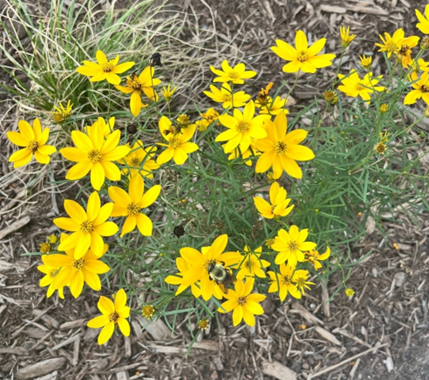
The right mix of pollinator species can support local fauna like bees and butterflies.
Urban marshes – bringing nature into the city.
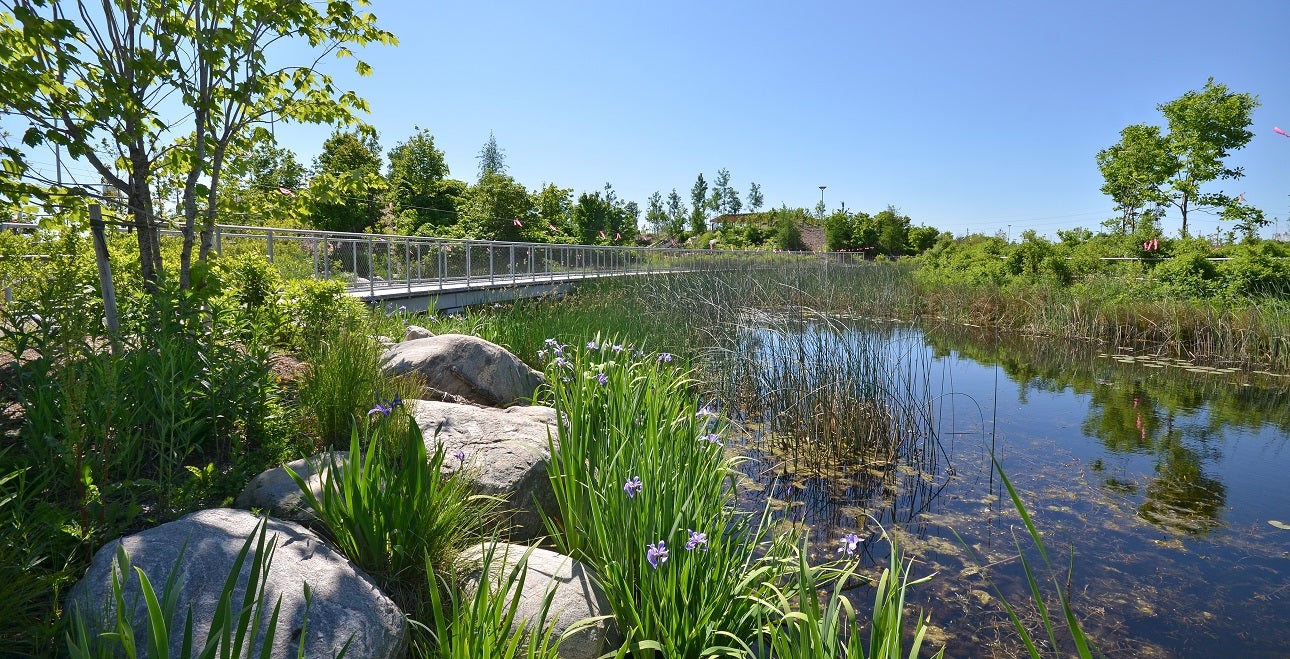
Pedestrian boardwalk spanning across one of Corktown Common's reintroduced wetlands.
Corktown Common, the centrepiece of the emerging West Don Lands, is an active, vibrant and inviting park that serves the local community, residents from across Toronto and visitors from far and wide. At 7.3 hectares (18 acres), it is the largest park in the area. With more than 700 trees and thousands of shrubs, groundcovers, and aquatic plants, Corktown Common is a diversely planted habitat. Its ecological richness encourages plant and animal biodiversity and supports a healthy forested area within the park. The large marsh, which is an integral part of the onsite stormwater management system, is home to birds, insects, frogs, and ducks.
Watch this webinar from Waterfront Toronto and Michael Van Valkenburgh Associates to learn more about the design and maintenance of plant communities in Corktown Common.
What do you think? Email us, Tweet at us or join the conversation by following us on Facebook and Instagram.

